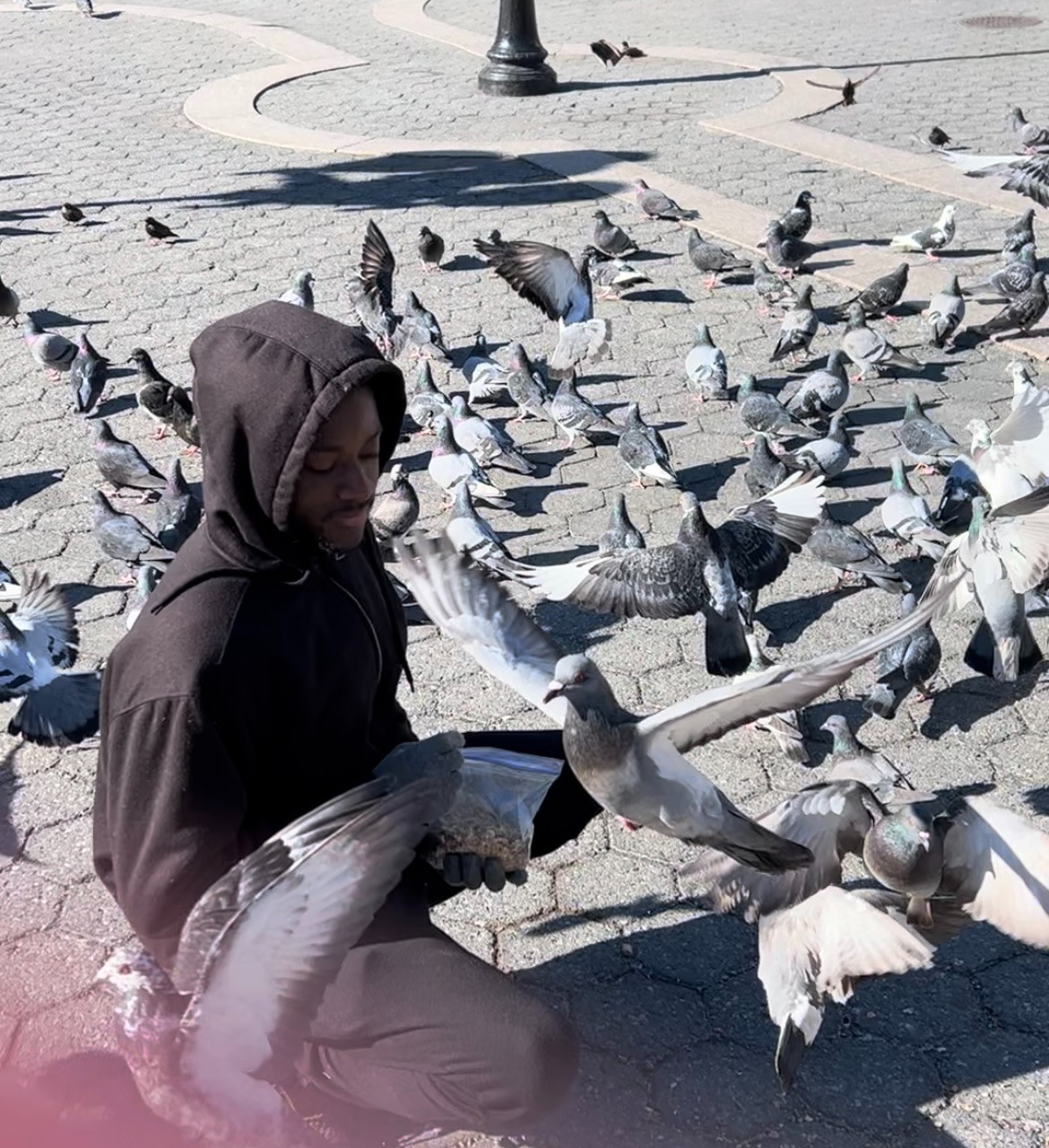
Between Whiskers and Wings: NYC's Pigeon Feeders Face Consequences of Rat War
The pigeons recognize him before he even arrives. As Bryson steps into Union Square, a flurry of wings erupts, iridescent gray bodies circling and cooing. He reaches into his bag, scatters a mix of seeds, and watches the feeding frenzy with quiet affection.
For Bryson, feeding pigeons is more than a therapeutic habit—it is a duty. A debt he believes humans owe their oldest urban companions. Since he was 14, he has raised pet pigeons of his own, nursed feral ones back to health, and fed those left to fend for themselves.
But in a city determined to wipe out rats, pigeon lovers like Bryson have become unintended targets. Like all of New York's 1,942 parks, Union Square deters individuals from feeding wildlife, citing sanitation concerns and, more recently, efforts to curb the rat population.
What began as a relatively quiet skirmish between pigeon feeders and park officials has erupted into an ongoing urban clash. In 2007, then-Councilman Simcha Felder proposed a $1,000 fine for feeding pigeons, sparking backlash. By 2019, the Department of Parks and Recreation attempted to amend regulations to ban feeding all wildlife in city parks and close loopholes that allowed feeding squirrels and birds. After public pushback, the proposal was rejected.
Now, the pigeon feeders face renewed pressure, not just from NYC Parks but also from the Mayor's Office of Rodent Mitigation, which has directly linked pigeon feeding to the city's war against rats. In 2023, the city rolled out "Feed a Pigeon, Feed a Rat," posters and deployed Rat Pack volunteers to deter feeders. This February, officials on the Upper East Side took further enforcement, cracking down on feeders along the East River Esplanade.
To pigeon advocates, the crackdown feels misguided. It brings a bigger threat, a possibility that a full ban on pigeon feeding could return to the city’s agenda.
"It's the humans' filth that pigeons are living in," says Tina Trachtenburg, better known as Mother Pigeon, a local artist and pigeon rights activist. "The scapegoat is the pigeon when it's actually us who are the most unsanitary and wasteful."
The city's logic seems simple: food left for pigeons also feeds rats.
Michael Parsons, a rodentologist, supports the city's position.
"Rodents are among the most adaptable omnivores; they will feed on almost any organic molecules available to them. Seeds could become a favorite," Parsons says. He believes pigeon feeding, like other forms of wasteful behavior, should be subject to regulation.
Tina outright rejects this notion. "When you feed pigeons, they eat everything. The claim that they leave food behind for rats? It's just never true," she insists.
Once a vocal activist in the 2019 protests against the feeding ban, Tina admits she is too worn down to fight the city's policies. "We used to do all kinds of activism, you know, with the city and all that. And it was so disheartening. I don't have the energy to be an activist."
For many, feeding pigeons is more than a fleeting act of kindness or an organized charitable effort. It's a deeply personal ritual. Some are people like Tina who feed pigeons and craft pigeon dolls in hopes of shifting negativity. But more often, the pigeon feeders a typical New Yorker encounters are simply individuals moved by routine, nostalgia, or the quiet comfort of companionship.
Back in Union Square, Bryson packs his seed bag and moves on to his next stop, Washington Square Park. He watches the pigeons settle on ledges and under eaves, the very architecture humans created. "Tomorrow, they'll be waiting again," he says, "these descendants of birds we once domesticated, then abandoned, and now blame for problems we ourselves created."
Post a comment